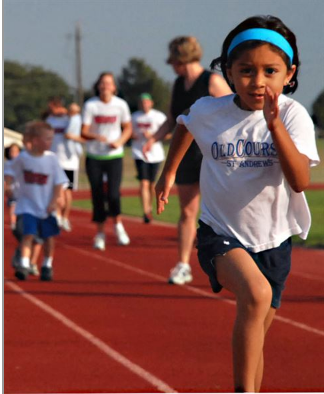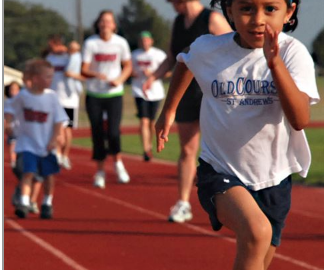Fair Over Equal
Why you should decide to provide an “equitable” experience to your students over an “equal” one.
“Life’s not fair!”
How many times have we said that as parents and educators? It’s true that the world doesn’t operate off of a system of fairness (or even kindness) but elementary school is not supposed to be a strict model of the real world. Instead, it’s supposed to be a mental incubator that helps students learn in a safe and healthy way. As teachers, our job is to constantly check-in with each of those little brains and make sure that they are developing appropriately. We are responsible for every single student in our classroom. Every. Single. Student.
In a day when resources are tight, how can we provide a fair shot to each student? The key to that is found in our understanding of what is “fair”.
In America, we’re raised to think of “fair” as “equal”. If one person gets candy, all people should get candy. If one person gets to use the bathroom during a test, everyone should get to use the bathroom during a test. Everyone receivesan equal amount of resources. That’s great in situations where everyone starts out on level footing, but what happens in a society where people begin life with a wide variety of haves and have-nots? What happens in a system where the outcome is the thing on which we’re being judged, rather than our participation along the way? In those cases, equal no longer feels fair.
My favorite example of this is the 400 meter dash. Over the course of 400 meters runners complete a full lap, covering two straightaways and two curved sections of track. The distance around the curved track is shorter near the center and longer toward the outer edge. If each runner began at the starting line and returned to the same place for the finish line, the runner in the first lane (the “inside track”) would run only 400 meters, while the runner in the 8th lane (the “outside track”) would cover over 450 meters. Talk about unfair!

Photo credit: Airman st Class Sara Csurilla
To account for this, officials stagger the starting positions of runners to make sure that they each cover the same distance in the end. In other words, to make sure that each runner has a fair race to the finish line, accommodations are made to support those who are not already on the inside track. This model resembles “equity”.
The fact that our educational finish lines come in the form of academic tests, rather than physical races, should not preclude us from following similar practices. But, what does that look like in the classroom?
For starters, we need to have a tough discussion with ourselves about our goals. What is our educational end game? If we believe ourselves to be more than babysitters, and I hope we do, then our goal should include preparing our students to reach the standards that have been identified for their age.
It doesn’t take very much experience to know that this is easier said than done. Students come in with vastly different backgrounds and abilities, making it difficult to keep students in lockstep. As educators, we need to find ways to move that starting line — but more importantly, we need to stop attempting to treat all students equally while unintentionally continuing to boost the students who are on the inside track.
Unfortunately, computer science is a subject where a small amount of inequity in the classroom has the ability to widen the overall learning gap significantly. Students who are exposed to technology have more opportunities to experience things not easily found in school, and these students tend to do better across several subjects. On the opposite side of things, students who are expected to take computerized versions of standard assessments, without daily use of the same technology tend to do much worse. The learning curve associated with technology and computers can be quite steep and by taking that skill for granted, we can set our students up for unfair testing experiences.
There are so many subjects that branch off of this idea that I won’t attempt to cover them all in this article. Instead, I’ll point to some stories that provide illustrations until I can get to them properly:
- Teachers tend to decide what they think students are (or are not) good atand subconsciously shape students with their unfair practices.
- Teachers unfairly assume that quiet children are less capable.
- Teachers who unfairly single out specific students due to their own biases can leave unnecessary scars.
- Schools that respect differences see greater success with diverse students.
- Many behavior issues in the classroom can be predictors of unfair educational practices.
That last bullet point comes from my own observations in giving equity talks and workshops to educators across the country. I don’t have an article to point to (yet) and at this moment, I’m not ready to lift the curtain on the research behind it.
When I teach about this subject in person, I’m generally armed with an illuminating exercise that takes educators by surprise and gives us a shared vocabulary that we can use to gather insights into the ways that a lack of equity affects a classroom. In writing, I find myself at a loss for explaining the “ah-ha” moment without ruining the potential for you to discover it yourself. I will link a couple of videos below that have a similar effect.
- A student’s background is not their fault
- It is hard to spot inequity when you are benefitting from it
With those in mind, I want to provide you with a short list of things that you can consider to keep your classroom as fair as possible.
- Decorate to your demographic: Make sure that the posters, books, and handouts in your classroom disproportionally represent the minority demographic of the students in your seats. If students never see anyone who looks like them in your learning space, they risk viewing themselves as an exception.
- Call on students randomly: By using popsicle sticks, random name pickers, or a number system, you will prevent yourself from further alienating struggling children by constantly calling on students who you believe to be more capable.
- Allow processing time for oral answers: When you call on a student who is quiet or less confident, allow a small processing period where you repeat the question, then create a short moment of comfortable silence before you request the answer. This should help buffer the anxiety caused by random selection.
- Work around homework: Studies have shown that homework actually increases the skills gap in students, particularly where technology is involved.
- Provide a resource for anonymous comments: Students who are struggling might not feel comfortable announcing why they are struggling. Provide a way for students to submit concerns and knowledge gaps in a way that prevents them from feeling “outed” in front of the class.
Many teachers believe that inequity is not an issue for their classrooms. They might see a lack of racial diversity and assume that this entire article does not apply. Please remember that inequities exist for all groups of students, not just by gender, race, and culture. Learning disabilities, skill level, introversion level, perceived popularity, religion, and socioeconomic status are just as important.
Have you had an “ah-ha” moment when you realized that equity actually was important to your classroom? Did you implement any tools in your classroom with the goal of creating a more fair environment? Please let us know by commenting below!


